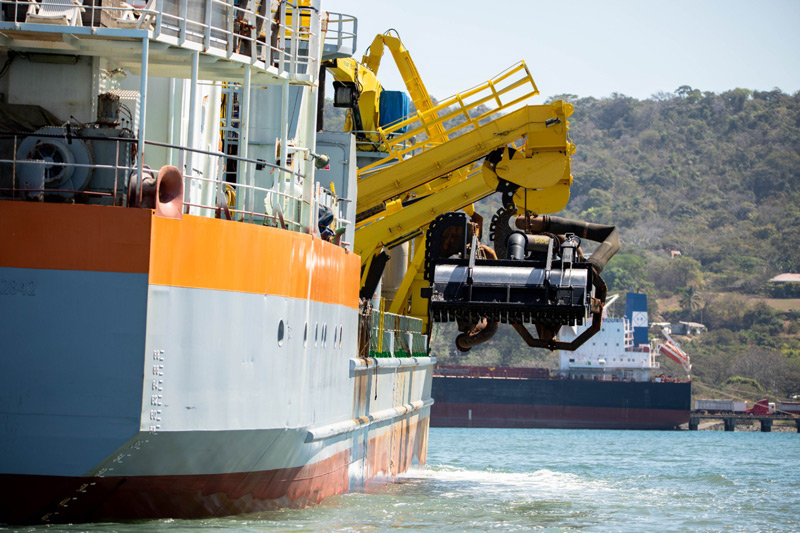Sociedad Portuaria Caldera moves up dredging to improve the port’s operating conditions

Sociedad Portuaria Granelera de Caldera (SPGC) and the Costa Rican Pacific Ports Institute (INCOP) decided to move up dredging in the port of Caldera, which was initially scheduled for the end of 2023. However, due to the excess sediment in the berths and maneuvering area, they decided to do it in January to provide better, faster service to the vessels.
The sediment movement began a few days ago with the arrival of the Dutch Dredging B.V.’s ELBE self-propelled suction dredge, which will work around the clock for about 35 days to complete the process in the shortest possible time and with the least possible impact on vessels.
The main objective of the dredging is to restore the terminal’s berths to their design depth, since the constant movement of sediment causes them to become shallower, keeping larger vessels from using the proper wharf.
Berth |
Design depth |
Current depth
|
Depth after dredging |
|---|---|---|---|
| #1 | 11m | 8.5m | 11m |
| #2 | 10m | 8.5m | 10m |
| #3 | 7.5m | 6.75m | 7.5m |
| #4 | 13m | 12.3m | 13m |
The dredging process consists of collecting the excess sediment that impedes the proper functioning of the terminal in a variable number of cycles each day. The process concludes with the deposit of the collected material at a point determined by the competent authorities, five kilometers from the port.
This is the fourth dredging operation since the concession began in 2016, with an investment exceeding ₡2 billion. The cost is borne by the concessionaire Sociedad Portuaria Granelera de Caldera, which decided to dredge in order to improve the port’s operations.
“Although, according to the concession contract, dredging was not scheduled until November, we moved it up because the country’s trade and economy requires it. We aim for each berth to offer the best conditions to receive vessels with the highest draft possible,” commented Ricardo Ospina, CEO of SPC/ SPC.
The state contract requires four dredging processes between 2006 and 2026. However, the characteristics of the port have made it necessary to move the establish dates up considerably. This process is the fourth and last dredging included in the contract. Consequently, addressing future sedimentation and port modernization, which the Chile’s industrial and trade associations have pointed out as a necessity, will require governmental decisions.

